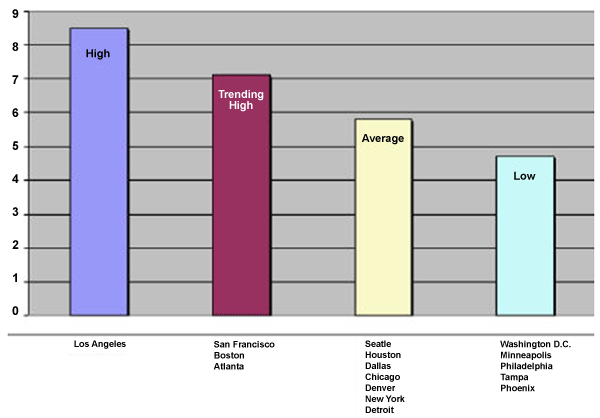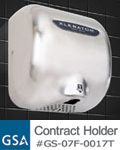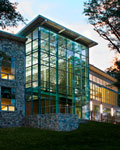Greening the Government: Sustainable Building Solutions for New Public Programs
Government programs and initiatives for green building
On the other hand, GSA and other government building projects face some challenges, not least of which is the politics of the day. High-performing, energy-wise buildings with good IEQ come at a cost. On the federal level, however, bipartisan leadership in advancing green building initiatives, both public and private, dates back several decades, to the National Environmental Policy Act of 1970. NEPA required that all agencies considering actions with major environmental consequences − for instance, construction − submit environmental impact statements for review by the then-nascent EPA. In this way, the EPA became an environmental clearinghouse for public building projects with federal funding.
Federal. The DOE ultimately joined EPA as the most influential agencies on sustainable design. Energy Star, the international energy efficiency standard created by EPA in the early 1990s, expanded from consumer products to include energy performance standards for buildings with DOE involvement. EPA also launched standards for water efficiency more recently under the name Water Sense. DOE's office of Energy Efficiency & Renewable Energy (EERE) wields great influence on green building policy, working with independent groups like Oak Ridge National Laboratories on the science behind efficiency.
EERE's Building Technologies Program funds the development of strategies to reduce commercial and residential building energy use. "Activity is at an all-time high," said P. Marc LaFrance, an R&D manager. "We'll see more resources allocated to building envelope R&D, which works to develop the next generation of roofs, walls, windows and foundations."
State. Currently, there's no potent federal law setting national codes for building energy efficiency or sustainability at the state level. Many states have been following the federal example for green or high-performance facilities, however.
Rhode Island's new Green Buildings Act, signed into law by the governor in late 2009, requires that all new public buildings achieve LEED certification, or the equivalent. California recently became the first to adopt a statewide mandatory Green Building Code, which goes into effect in January 2011. The code specifies constraints for new buildings, including water-saving plumbing, low-VOC materials and inspection regimens for energy systems like water heaters. "This is going to change the whole way that buildings are conceived and constructed," said David Walls, executive director of the California Building Standards Commission. "Other states will try to mimic what we're doing."
Other state-level strategies focus on energy use. Arizona adopted energy conservation standards in 2008 requiring its state and university buildings to cut their energy use by 15 percent below 2001-2002 levels by July 2011. Some employ tax incentives: the Maryland Energy Administration offers a credit of up to 8 percent of the total cost of a building over 20,000 square feet constructed within a "priority funding area." New York's environmental department offers similar breaks. Other state programs offer direct financial assistance to green building projects, like the Massachusetts Renewable Energy Trust and New Jersey's Smart Future Planning Grant Program.
| Portland, OR, and Seattle, two of the first to have a local green ordinance, claim that green rules actually attract investment and tax revenues. |
County and local. At the municipal level, fierce competition for economic development drives financial incentives to build sustainably - and equally lax environmental rules meant to attract business. A number of towns and counties, however, are banking on the long-term benefits from sustainable development to outweigh any potential short-term losses and upfront costs. Hennepin County, MN, has established its own sustainability rating system for building projects receiving state bond funding. Cities with their own comprehensive Green Building Programs include Austin, Texas, and Scottsdale, Arizona.
 |
The survey shows that the city of Los Angeles is a clear winner in the "IBM Smarter Buildings" (PDF) study, which surveyed 6,486 office workers in 16 U.S. cities on issues ranging from office building automation and security to elevator reliability and conservation issues. Source: Environmental Leader |
Portland, OR, and Seattle, two of the first to have a local green ordinance, claim that green rules actually attract investment and tax revenues. San Francisco recently made headlines by adopting the nation's strictest commercial green code and city officials expect it to be a success. "Consider what the voluntary system created. LEED square footage has increased more than four-fold in 2009 alone," said Barry Hooper, a green-building specialist for the city and county.
Existing state laws often prohibit local governments from adopting strict green building standards. In Massachusetts, legislators have been slow to adopt a statewide green building code, so city leaders in Boston adopted a creative solution, a green zoning rule called Article 37, which required municipal projects to achieve LEED Silver and applied stringent rules for commercial projects over 50,000 square feet.
Notice

800-255-9235 | www.exceldryer.com

866-482-7374 | www.sunguardglass.com









